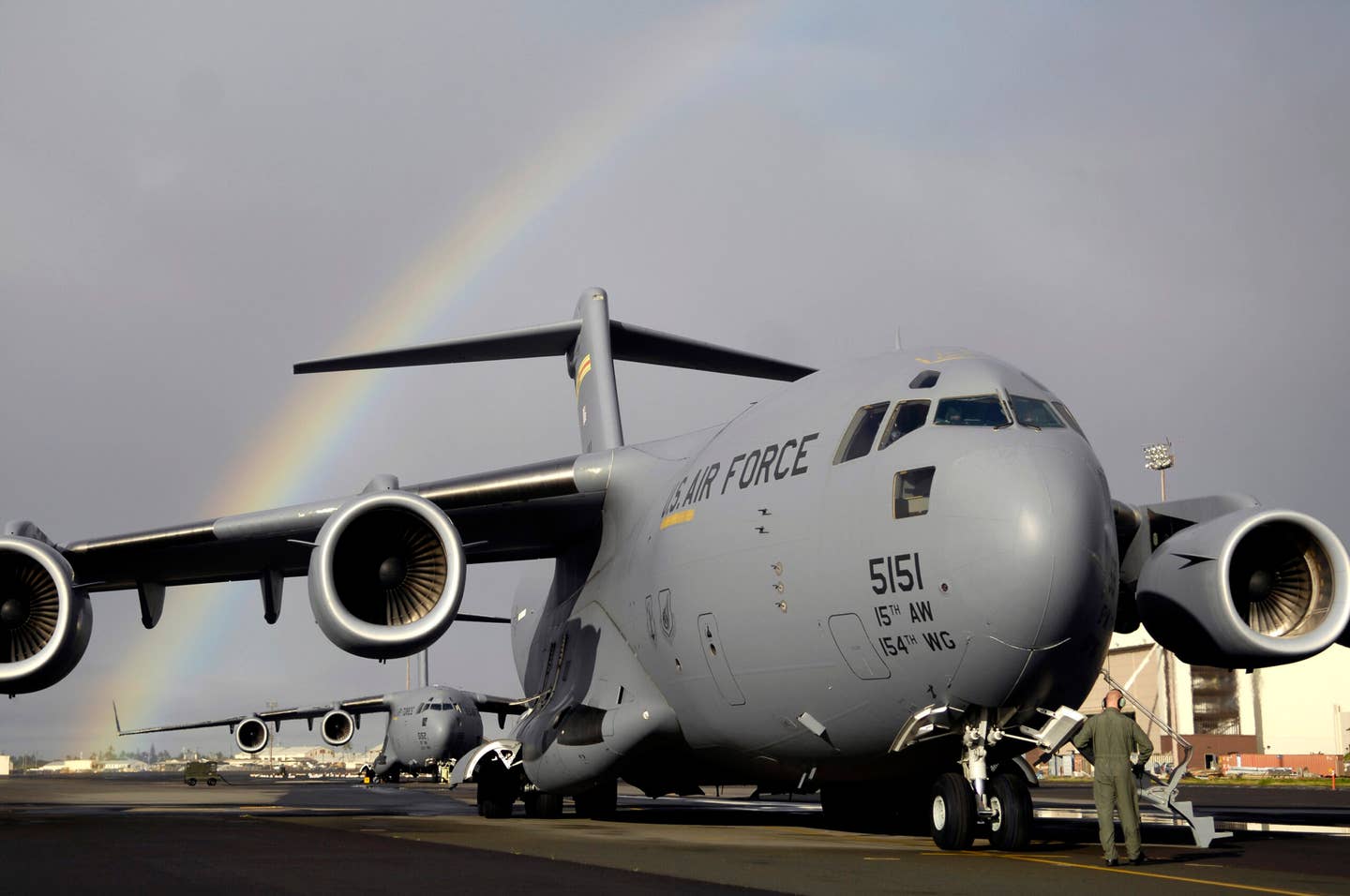USAF Seeks To Slash C-17 Fuel Use In New Efficiency Program
The Air Force’s new pilot program targets its largest fuel consumer, the C-17 Globemaster III, and takes cues from commercial airlines strategies.

Staff Sgt. John Eller conducts preflight checks on a C-17 Globemaster III. [Courtesy: U.S. Air Force]
In a bid to cut its aviation gas bill, the U.S. Air Force is employing new fuel efficiency strategies that take cues from commercial airlines, the service announced.
The new pilot program—dubbed the Mission Execution Excellence Program (MEEP)—targets the largest fuel guzzler in the fleet: the C-17 Globemaster III. The test program will roll out at Joint Base Charleston in South Carolina and Travis Air Base in California and run through the end of the year.
The news comes as U.S. defense officials are increasingly integrating climate change considerations into operations and planning, a priority underscored by the Department of Defense's (DOD) climate adaptation plan released in October. Initiatives span the gamut. Thursday, for example, the DOD—the largest energy user in the U.S. federal government—along with the General Service Administration, released a request for information for market capabilities for supplying the government carbon pollution-free electricity.
The Air Force is feeling the pressure to find efficiencies. When it comes to DOD fuel consumption, the Air Force and the C-17 are among the top consumers, according to the service. In 2018, for example, the Air Force was using about 2 billion gallons of aviation fuel each year, a staggering amount that claimed about 81 percent of the service's total energy budget.
“We’ve met with a number of commercial airlines and freight and transport companies to see how they operate in the most efficient and effective way possible using 21st century tools,” Deputy Assistant Secretary of Air Force Operational Energy Roberto Guerrero said in a statement.
According to Air Force officials, initial estimates indicate the strategies would amp mission effectiveness per gallon of fuel by 3 percent and save up to $80 million in fuel costs.
“There are a lot of opportunities to support airmen in flying more efficiently, like software that helps airmen fuel plan more easily or flying techniques that pilots can implement, maintenance practices to improve engine performance and ways to improve load plans," Guerrero said. "Many of these are low-hanging fruit that we simply need to fund and incentivize.”
New Program Strategies
"MEEP will mainly work with pilots and operations planners, as well as maintainers and logisticians, and will leverage airman innovation to integrate improved techniques and best practices into their day-to-day operations," the Air Force said.
The MEEP strategies include:
- Precision fuel planning, such as decreasing excess fuel tankering during planned flights when possible.
- Reducing the number of engines running during taxi to the minimum required for safe operation when possible.
- Limiting the use of auxiliary power units during ground operations and utilizing more efficient ground power equipment when possible.
- Minimizing the time between engine start and takeoff by reducing the number of engines running or starting the engines simultaneously when possible.
- Employing continuous descent operations in a low-drag configuration, with minimal engine thrust when possible.
- Flying at optimal cruise altitudes when possible.
How the Airlines are Doing It
The Air Force program strategies mirror those deployed by commercial airlines, which increasingly see climate change as a business risk.
American Airlines, for example, is employing a laundry list of techniques and strategies to curb fuel use and reduce emissions. One strategy the airline has found to be successful is to increase the use of single-engine taxi operations.
"By relying on just one aircraft engine to taxi to the gate after landing when possible, we lowered emissions by 18,700 metric tons of CO2 in 2020," the airline said in a recent environmental report.
"We know the most impactful thing we can do today is use less fuel as we take our customers on their journeys," American Airlines chairman and CEO Doug Parker said in the environmental report.
American has modernized its fleet, buying 600 new airplanes since 2013, which it says increased its fuel burn per available seat mile by 8.5 percent. Filling airplanes and operating close to the aircraft's maximum passenger capacity also increases fuel efficiency, according to the airline. Other strategies included reducing weight in other areas, such as installing lighter seats, eschewing in-flight entertainment systems, and using lighter paint. Those weight-reducing initiatives saved the airline 12.4 million gallons of aviation fuel, it said.
Earlier last year, American also began optimizing weather reports with specialized software to provide crews optimal flight altitudes and speeds, a move the airline saved 1.1 million gallons of fuel in 2020 alone.
Air Force officials say following the conclusion of the MEEP pilot program in December, the program will be expanded to other bases and aircraft.

Sign-up for newsletters & special offers!
Get the latest FLYING stories & special offers delivered directly to your inbox






